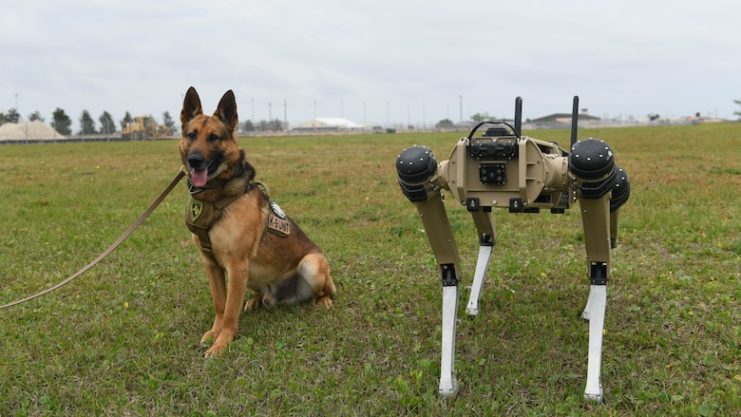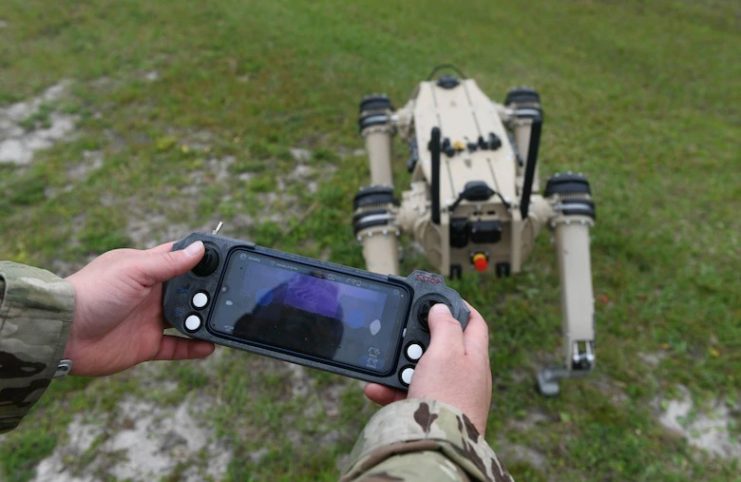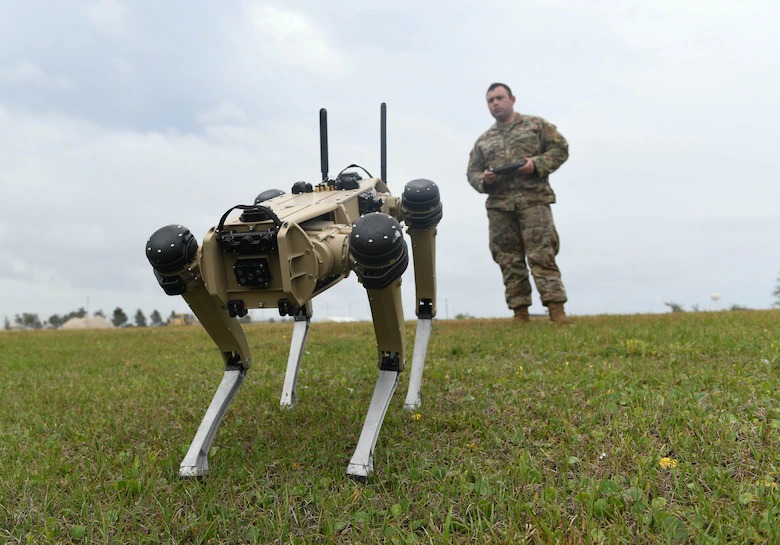The 325th Security Forces Squadron at Tyndall Air Force Base has received their first shipment of “Quad-legged Unmanned Ground Vehicles,” also known as Q-UGV and further known as “robot dogs.”
The semi-autonomous robots were designed by Ghost Robotics and Immersive Wisdom. They are capable of crouching to crawl into shallow spaces. The base intends to use them to provide additional security at the installation which is located in the Florida Panhandle.
Mark Shackley, the Tyndall Program Management Office security forces program manager said that the new droids “significantly increase” awareness for base defenders. The robots can be sent to remote parts of the base while human and canine defenders continue patrolling other important areas.
The base had announced in November that they would be the first to acquire the new technology. At the time they pointed to the flexibility the robots would provide defenders to rapidly respond to emergency situations.

Each of the Q-UGVs is equipped with a myriad of cameras and sensors. These give the unit a 360-degree image of their environment. The four-legged units can climb rugged terrain in temperatures that range from -40 to 131 Fahrenheit degrees.
The design of the units resembles that of Boston Dynamics’ robot, Spot. That robot is capable of running at up to 3.5 miles per hour.
The founder and chairman of Boston Dynamics, Marc Raibert, was in a recent episode of 60 Minutes where he explained why the company had chosen to build robots with legs rather than wheels or tracks. He said that humans and animals are able to go anywhere on Earth using their legs while wheels and tracks can limit mobility.
Boston Dynamics has sold over 400 of the Spot unit to entities around the world. Each unit begins at $75,000 with additional enhancements and accessories adding to the price.
https://www.youtube.com/watch?v=X7q6zaNCxfo
Master Sgt. Krystoffer Miller, the 325th SFS operations support superintendent said that Air Force squadrons are willing to look at new technologies to see what is possible. The mobility of the robot dogs was what attracted the squadron. The robots will be able to patrol new construction areas planned at the base which allows the squadron to maintain or even increase their ability to secure the base.
Former Vice President Mike Pence announced in 2019 that Tyndall would be one of the bases chosen to host the F-35 Joint Strike Fighters. The base is rebuilding in order to become a “fifth-generation base.”
The Air Force has previously stated that they hope to base three squadrons of F-35s at Tyndall since the F-22 Raptors that had been based there were moved to other bases due to Hurricane Michael.

The robot dogs are not designed or meant to replace living dogs. The droids will be programmed to follow specific patrol patterns and will be monitored by a Security Forces electronic security sensor system noncommissioned officer.
If the robot dogs perform well at Tyndall, the Air Force may seek to make them standard-issue at all their other bases.
Another Article From Us: US Air Force Developing Supersonic New Air Force One
Miller said that he is hopeful other bases will see the positive results Tyndall sees with the new robots and that they will continue to explore non-traditional methods to meet the needs of the modern Air Force.
